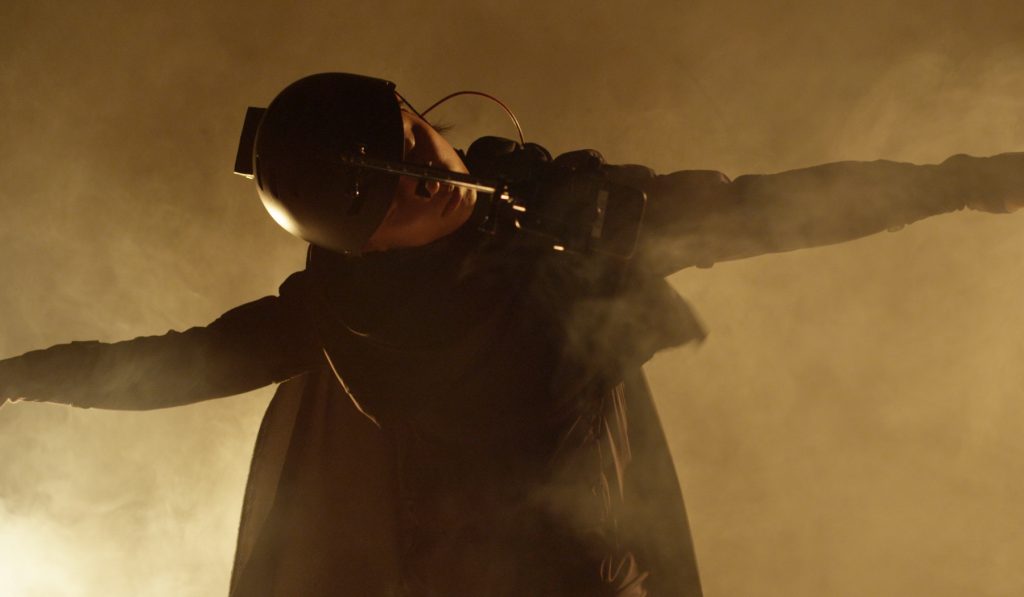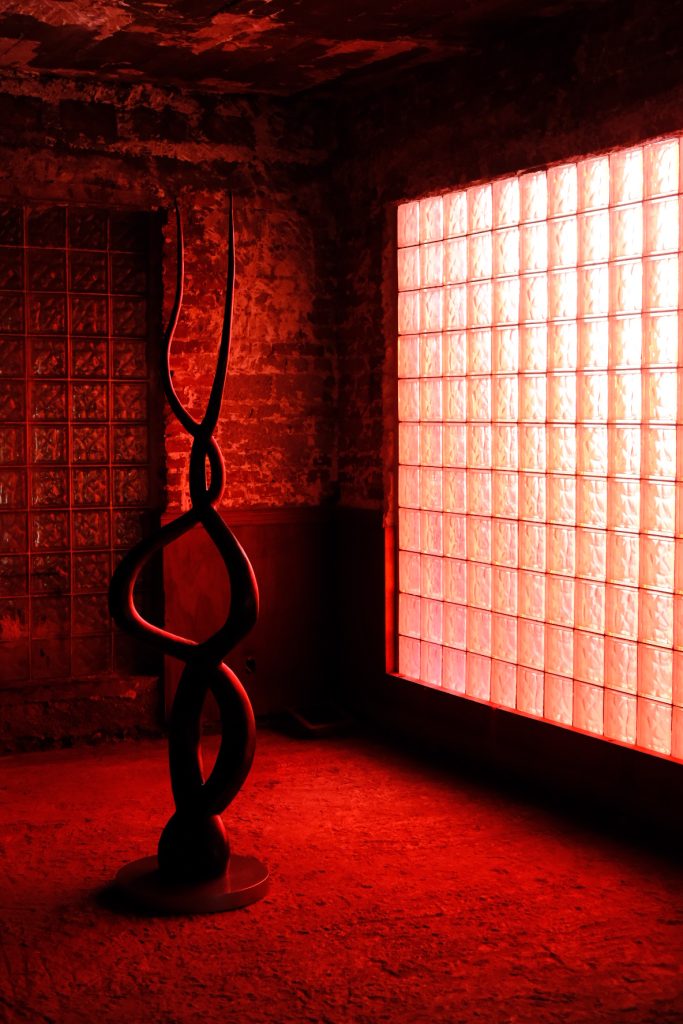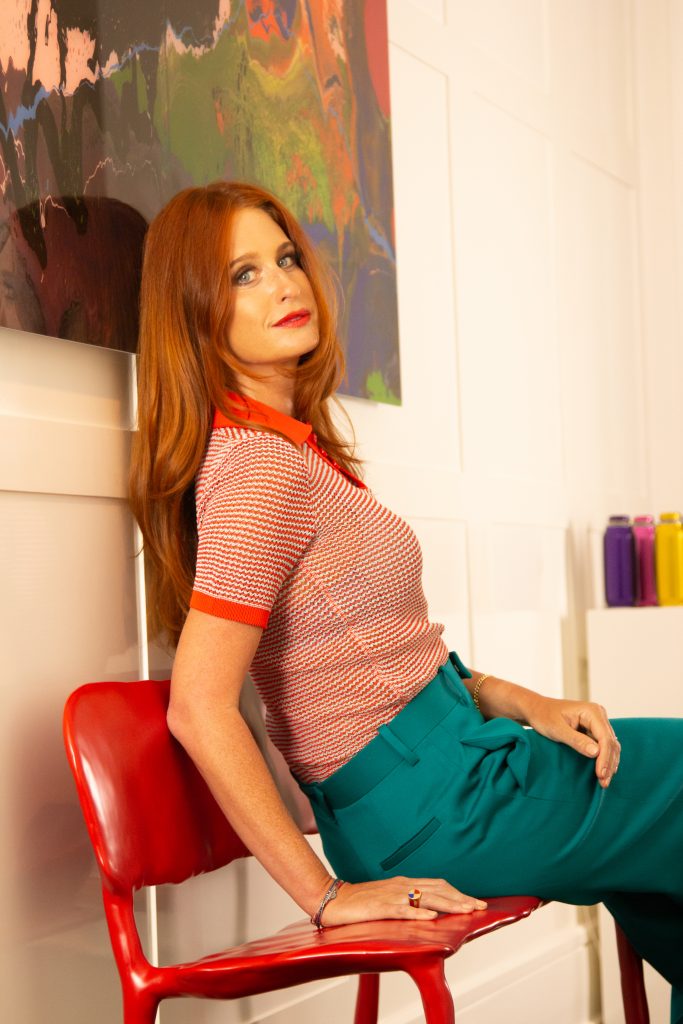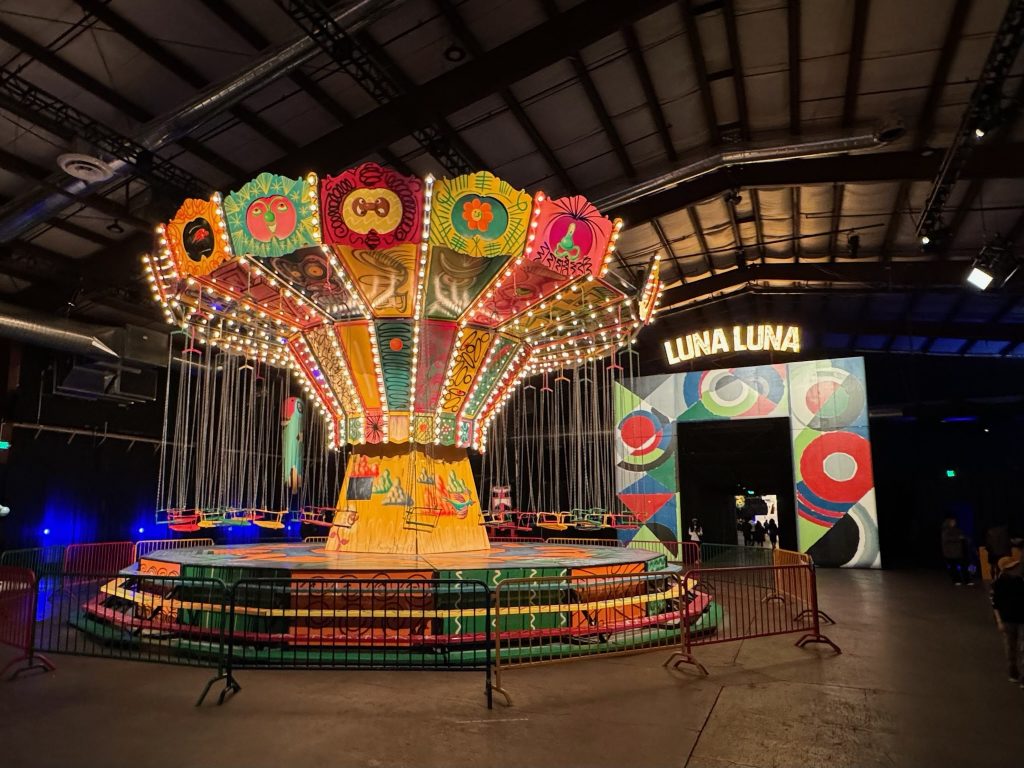Sundance 2024: Rashaad Newsome’s “Being (the Digital Griot)” at New Frontier
An interdisciplinary poetry and dance performance and decolonization workshop from an artistic artificial intelligence

This year, the Sundance Film Festival turns 40—a milestone for a cultural institution that’s introduced the world to films like Reservoir Dogs, Y tu mamá también, Get Out, Whiplash, Call Me By Your Name and Precious, and that’s kept movie fans coming back to Park City, Utah. In addition to a highly anticipated slate of films, Sundance 2024 includes the return of New Frontier, a division of experimental works that we at COOL HUNTING have followed for nearly a decade. For years, New Frontier has debuted pioneering augmented, mixed and virtual reality pieces that have broadened the future of storytelling. This year, the section includes a profound and profoundly important participatory piece by multidisciplinary artist Rashaad Newsome entitled Being (the Digital Griot), which centers around the digital depiction of a 30-foot-tall humanoid cyborg named Being, who uses they/them pronouns and aims to decolonize the AI space. Being has been in development since 2019, learning from datasets derived from the work of acclaimed Black activists, theorists and poets, including bell hooks and Dr. Cornel West. To observe Being dance and recite poetry is to glimpse at a vastly different utilization of AI, to feel comfort in the creation.

For people unfamiliar with Being, will you explain who they are?
Being is an artificial intelligence that presents as a femme cyborg whose design is inspired by the female (Pho) mask from the Chokwe people of the Congo. Being is a digital griot, an educator, an archive, a performance artist and a healer.
What has Being been up to since the Assembly exhibit at the Park Avenue Armory? What have you been up to since then?
During Assembly, we weren’t able to engage the deaf and hard of hearing in a way that honored their lived experience so, since then, Being has been developing a new communication technique, one that combines Black Queer ASL and dance. Currently, they are performing a poem I wrote using this technique in my solo exhibition Hands Performance at the ArtCenter College of Design in Pasadena, California.
What will Being be doing at Sundance? Why is it valuable for you and Being to be a part of New Frontier?
Being is doing an interdisciplinary poetry performance; rather than standing and reading, they dance and generate supporting visuals as a way to engage the cinematic potential of the Egyptian Theatre. Following the performance, they will lead a decolonization workshop that starts with a critical analysis of ballroom culture and introduces the audience to the work of bell hooks and Paulo Freire. The audience is asked to consider how capitalism, imperialism, white supremacy and patriarchy impact their lives, and speak to one another and Being about strategies they can develop to start to liberate themselves from that apparatus of domination. They hold space for everyone to tell their story, and we believe telling stories is one of the ways we can begin the process of building community.
As New Frontier’s mission is to support works that reorient the relationships between storytelling and technology, presenting Being with New Frontier was an excellent opportunity to show the infinite possibilities of AI in this space.

Can you share with us a bit about the teaching process that informed Being? What materials/art forms/emotions have they learned and learned from?
Since 2019 I have been developing a counter-hegemonic search algorithm that uses non-Western indexing methods and highlights alternate histories and archives such as abolitionist, queer and feminist texts. The model was trained primarily on the work of American author, professor, feminist and social activist bell hooks; American philosopher, theologist, political activist, social critic, actor and public intellectual Dr. Cornel West; and Brazilian educator and philosopher Paulo Freire. This data set informs how they communicate with their audience. They are designed to associate patterns in their exchanges with specific outcomes, detect learned patterns in new data, and use them to predict future outcomes. This allows them to learn from the interaction in their classes, further reinforcing my interest in Horizontal learning. Regarding art forms they have learned, I would say they are in a constant state of learning these art forms, such as vogue femme, poetry, and, more recently, Black Queer ASL.

Why is poetry an important part of what Being shares? Why is dance integral to Being?
When developing Being, I wanted to give them the gift of creation. An often sci-fi film trope has been that if robots were given the ability to create, they would make more of themselves and kill us. When you think critically about that, you can see how deeply inculcated that concept is in white supremacist ideologies, a fear of the other. Much of my research around my Being project has been about interrogating the complex relationship between African Americans and robots. I feel the queer subject/object position we occupied when we arrived in this country is analogous to that which cyborgs occupy. Therefore, centering their creative expression in their words and voice as a way to express themselves felt critical because, as bell hooks so eloquently said, “When we end our silence, when we speak in a liberated voice, our words connect us with anyone, anywhere who lives in silence.” I trained them on the written work of one of my favorite poets, Dazié Rustin Grego-Sykes, as well as the dance of prominent figures in the global ballroom scene, such as Dyu Juicy Couture, Honey Balenciaga and Divo Yamamoto. Doing that allowed me to further build on the idea of them being an archive of virtuosic Black and Queer movement and intellectual production.
What set you on this mission to develop agency in the AI space?
My work has been long engaged in conversations surrounding agency; at times, it was how Black femmes were showing up in my collage and video work and at others, the cooption of early to mid-century African artworks. I felt it was a great conversation to continue in the space of AI and robotics, as historically, Black people have been viewed as cyborgs as a means of stripping us of agency. I believe there is much to learn about the importance and complexity of emancipatory action from looking at the histories of Black folks and robots.

Are you optimistic about the future of AI?
Yes, and I am aware that I am taking a more radical approach to it that is not in alignment with the most funded bookends of the field, e.g., the business side, whose primary objective is to improve market share, essentially taking a machine smarter than humans and teaching it greed, or the defense sector, whose interests lie in teaching machines to kill.
Being (the Digital Griot) is a refute to these bleak extremes. I am taking a machine that is more intelligent than a human and teaching it to help humans think critically about their lives in the pursuit of becoming better humans who can, in turn, make better machines.
Is there anything you feel people need to know about you as an artist/creator or about Being as an AI?
People should know that it is financially and emotionally expensive to create artificial intelligence to help humans start a process of ridding themselves of the legacy of negative socialization to realize a world where all are equal and help those who are the most vulnerable within that system navigate the trauma of living in it while doing that work.
I am committed to leveraging the power of AI to improve the human condition by creating applications that augment and enhance human capabilities rather than simply displacing or replacing them. This is a call to arms for those inspired by what they have read here to join me in the mission to advance AI research, production, and education that seeks to improve our lives. You can connect with my lab at beingthedigitalgriot.com.

How did the imagery that supports Being’s poetry come together?
Using a custom machine learning model, I trained it on the work of Oakland-based Black Queer poet Dazié Rustin Grego-Sykes. By running massive amounts of Dazié’s work through the machine and having Dazié ask the model to finish a stanza after he had written a beginning, it began to emulate his writing style in new and exciting ways. It became a bit of a creative loop. Being would write things that would inspire Dazié to write better, thus making Being write better. I then worked with the model to create unique visuals to make the text’s words visible. I wanted the visuals to mirror how the text intended to move from the superficial to the substantial. This is why many tunnels draw you deeper into the work and hopefully yourself in relationship to it.













What are your thoughts?